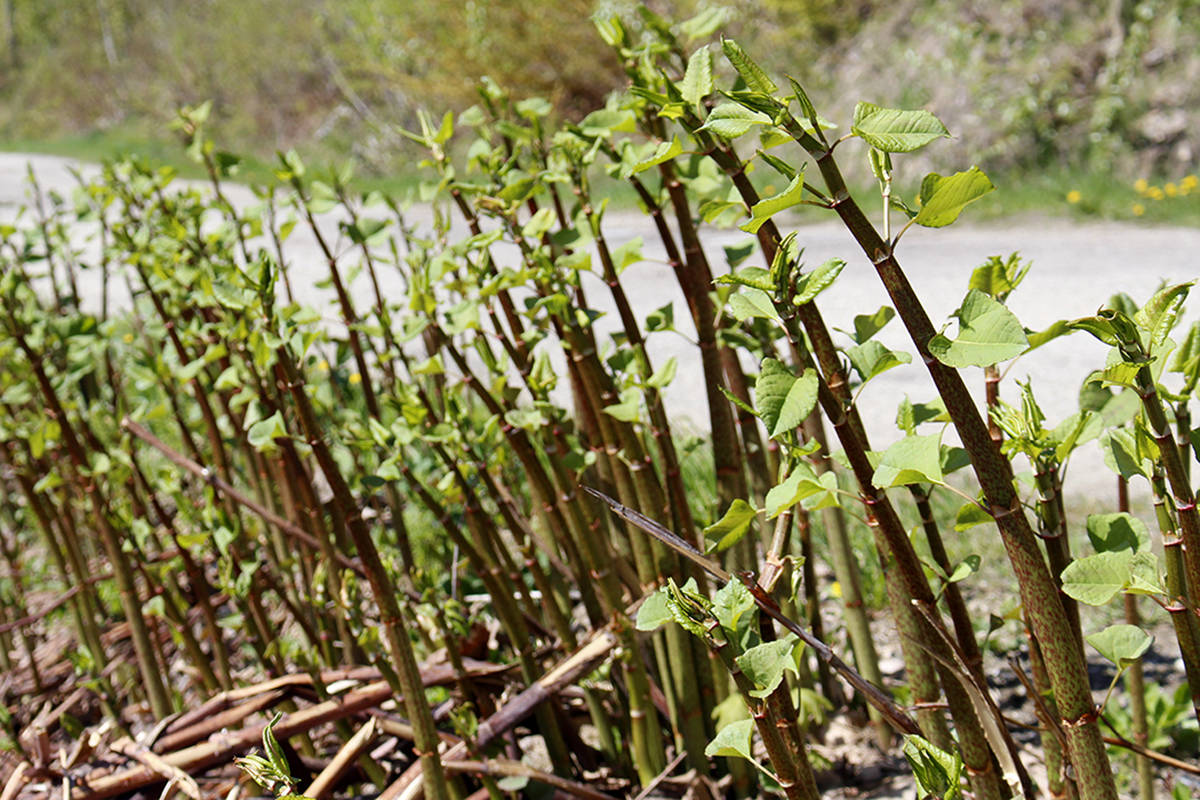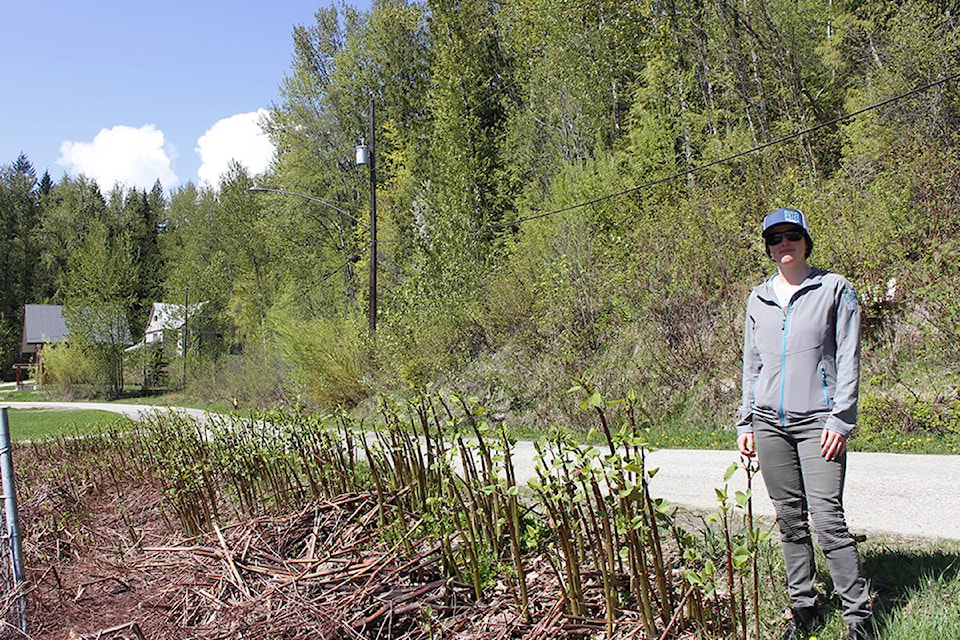Nathan Kunz
Revelstoke Review
Through relocation and rapid spreading, Revelstoke has become host to several invasive plant species, including knotweeds, himalayan balsam, blueweed and leafy spurge, as well as toxic plants such as hoary allysum.
Being educated on invasive species can benefits everyone in the long term says Robyn Hooper, an executive director with the Columbia Shuswap Invasive Species Society, based in Revelstoke.
“I think everyone wants a pristine, beautiful backyard,” says Hooper. “Everyone has a part in this issue, so I’d encourage everyone to get involved.”
The society aims to educate public and private landowners, as well as land and aquatic property owners, on invasive species and their impacts across the Columbia Shuswap region.
As they are not native to the ecosystem, Hooper explains, invasive species are able to hold an advantage over native species.
“If we have an invasive species come into an area, they’ll take over the habitat of native species, which means it’s harder for our local animals, and fish and plants to survive,” says Hooper.
May in British Columbia is Invasive Species Action Month, meaning an increased effort to raise awareness and rid Revelstoke of harmful species of plants and animals.
The proclamation announcing Invasive Species Action Month, which was signed on May 1st, 2018, is part of the province’s renewal to their commitment in managing invasive species throughout B.C. Along with the proclamation came an updated five-year strategic plan to minimize the impact of non-native plants and animals on British Columbia’s environment, people and economy.
Through a partnership of the Government of British Columbia and the Initiative Species Council of B.C., seven key priorities have been set as the focus for the next five years across the province.
These components, according to a press release by the council, are: establishing and enforcing effective regulatory tools, strengthening collaboration, preventing introduction and spreading, implementing effective control, restoration and monitoring programs, supporting relevant and applicable research, providing stable long term funding and promoting action through communication and education.
“The updated Invasive Species Strategy for British Columbia demonstrates our ongoing commitment to contain the spread of invasive species in this province,” said George Heyman, minister of Environment and Climate Change Strategy in a news release. “Proclaiming May 2018 as Invasive Species Action Month will help raise awareness of how these species can affect both urban and rural environments.”
Since the creation of Columbia Shuswap Invasive Species Society in 2013, Hooper says she has seen a continual growth in public interest in combating the spread of invasive species, a trend which has led to noticeable progress in their cause.
“It has been neat to see that grow,” says Hooper.
“Year after year you’ll go back and you’ll be seeing decreases and get to tackle new things.”
For more information on invasive species, visit columbiashuswapinvasives.org
@NathanKunz1
nathan.kunz@revelstokereview.com
Like us on Facebook and follow us on Twitter.

